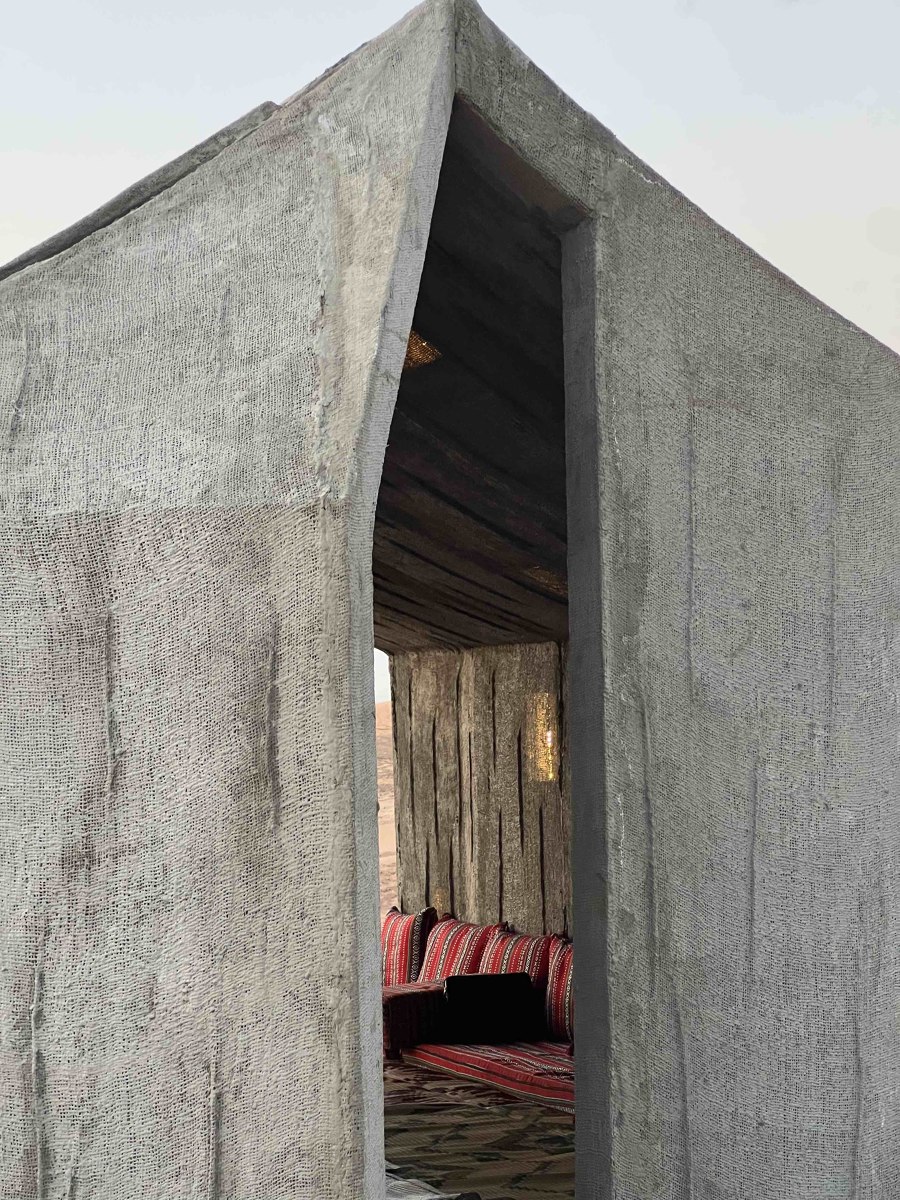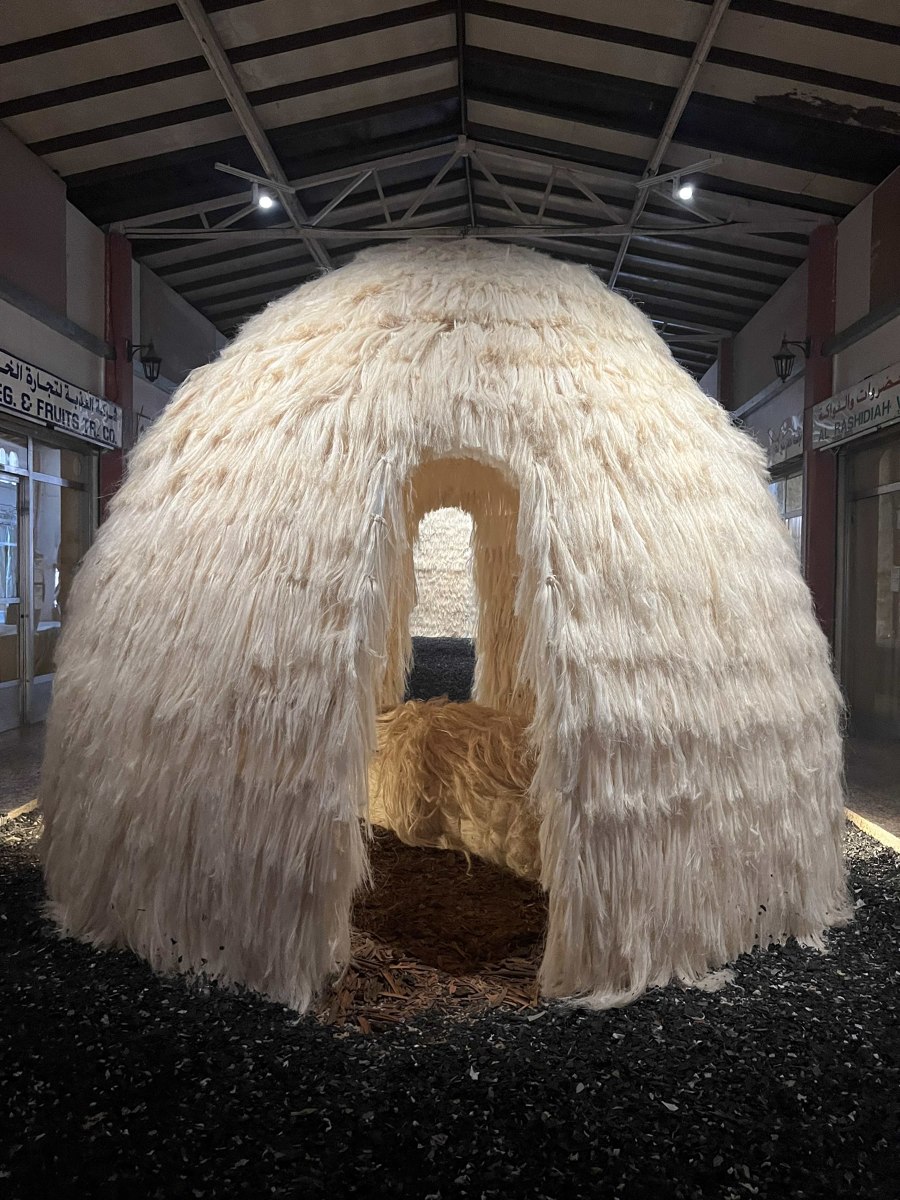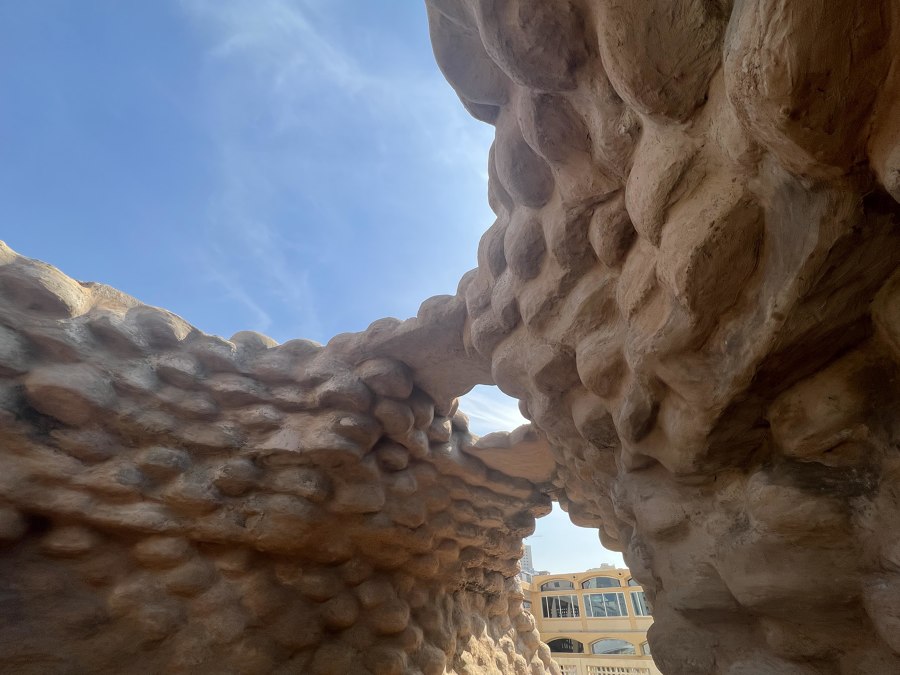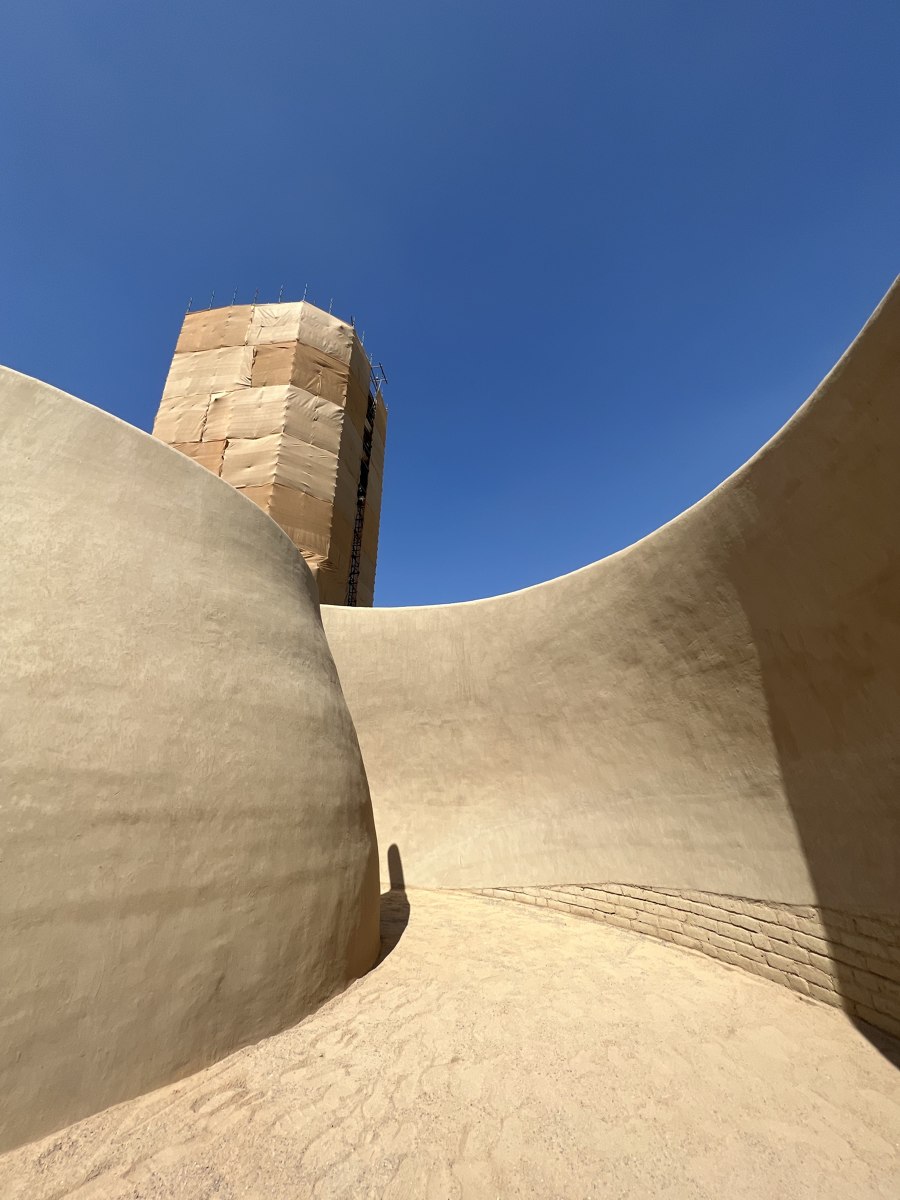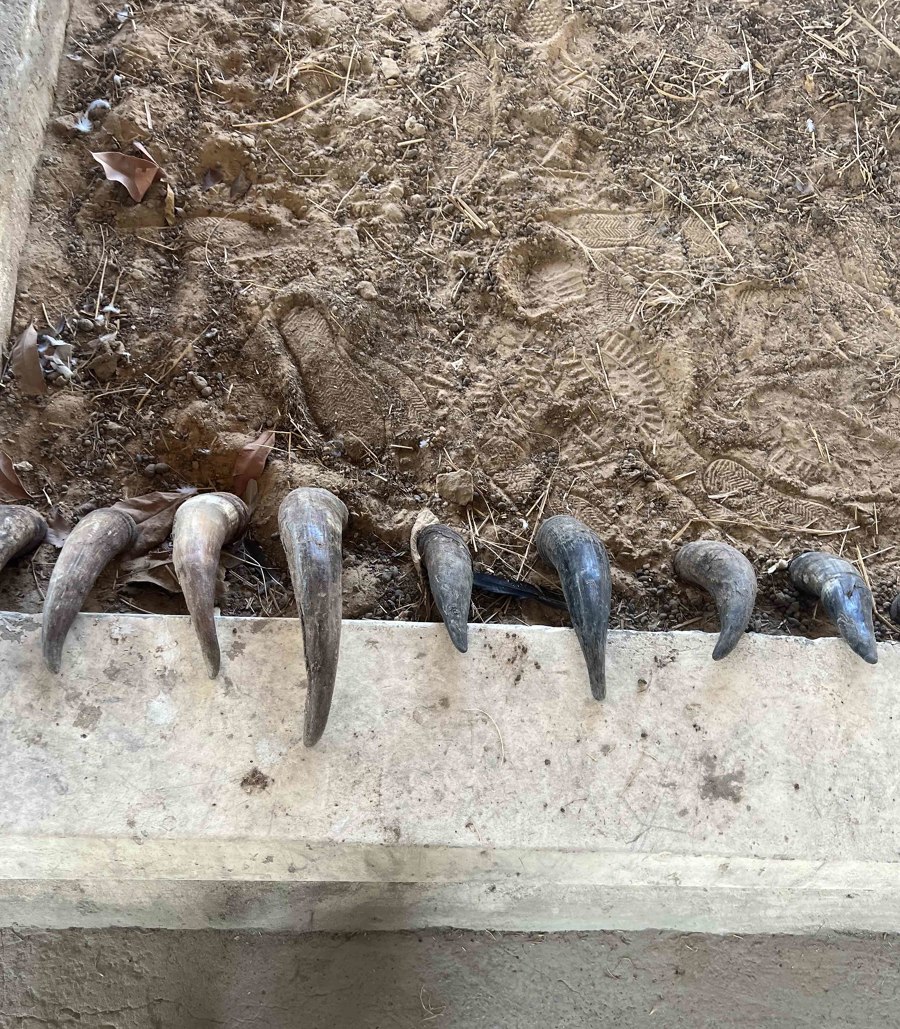Sharjah Architecture Triennial 2023 explores creative responses to global scarcity challenges
Brand story by Eirini Ilia
13.12.23
The highly anticipated second edition of the Sharjah Architecture Triennial, themed ‘The Beauty of Impermanence: An Architecture of Adaptability,’ arrives to captivate audiences until March 10, 2024.
Raw Threshold by Al Borde. All images courtesy of Sharjah Architecture Triennial 2023
Curated by the renowned Lagos-based architect Tosin Oshinowo, the event offered a vibrant and immersive experience during its three-day opening program. Through an array of activities, including talks, tours, screenings, workshops, and performances, the Triennial weaves a thought-provoking, city-wide dialogue exploring contextual solutions, resource sharing, and waste reuse – the trifecta that holds the potential to reshape the future of global architecture and design.
Panel talks, performances amd workshops take centre stage
Sharjah Architecture Triennial (SAT) was first established in 2018 to provide a platform for architecture and urbanism in a region that extends from West Asia to South Asia and the African continent. Physically anchored in Sharjah and the United Arab Emirates, the program aims to engage diverse audiences and stakeholders in a collective conversation on the broader role of architecture spanning across social and environmental issues. The much anticipated 2023 edition is curated by acclaimed Nigerian architect Tosin Oshinowo, and goes beyond expectations. Themed ‘The Beauty of Impermanence: An Architecture of Adaptability,’ the Triennial invites participants and visitors to explore the potential of local materials, climate resilience and community adaptability through immersive installations, screenings, workshops, and performances.
The Concrete Tent (2023) installation by DAAR – Sandi Hilal & Alessandro Petti
The significance of dust, architecture, material life cycles
Oshinowo’s curation places a spotlight on 29 participants who showcase creative and resourceful design solutions emerging from the conditions of scarcity prevalent across the Global South. The inaugural event gave the stage to SAT’s participants for a series of panel talks, where they got to discuss their projects, with forums revolving around the three curatorial strands that underpin ‘The Beauty of Impermanence: An Architecture of Adaptability,’ These included discussions around contextual-based approaches to architecture, the importance of embracing the life cycle of materials, and the socio-economic significance of dust. The initiative was moderated by Matthew Barac (Professor of Architecture & Urban Culture at London Metropolitan University), Seetal Solanki (Founder and Director of Ma-tt-er) and Mpho Matsipa (Visiting Assistant Professor at GSAPP, Columbia University), respectively.
Additionally, guided tours, including a curatorial walkthrough at the Al Qasimiyah School and visits to the exhibitions by Hunnarshala Foundation and Cave_bureau at Sharjah’s Old Slaughterhouse, provided visitors with firsthand experiences of impermanence states through ambient sounds and projections. An offsite visit to the abandoned Al Madam village further showcased the Concrete Tent (2023) installation by DAAR – Sandi Hilal & Alessandro Petti, offering a space for reflection on the temporariness experienced by today’s migrant populations.
‘The importance of embracing context in design and architecture has informed and inspired my practice for over a decade, and I’m delighted to introduce this incredible range of practitioners who are guided by similar principles and ideas. At this critical moment for the planet and its population, I hope that visitors come away with a sense of hope and possibility as we celebrate creative, innovative and solution-orientated approaches and communities from across the Global South, and their potential to change the future of how we live,’ comments curator Tosin Oshinowo.
Earth to Earth by Sumaya Dabbagh (Top). Anthropocene Museum by Cave_bureau (Bottom)
That’s not all! Workshops on upcycling techniques led by Thomas Egoumenides and Collab: Henry Glogau & Aleksander Kongshaug explore eco-conscious solutions. Their installation, ‘Resource Autonomy’ (2023), featuring three bamboo pavilions, demonstrates the potential of resource creation from environmental challenges – such as solar desalination for clean water and salt brine for air purification. Furthermore, to enhance interactive dialogues, Mirage City Cinema hosts a screening of ‘Tropical Modernism: Architecture and Power in West Africa (2023),’ exploring the interplay between modern architecture and colonialism. This, is accompanied by a lecture event with the mission of exploring the relationship between humans and non-human forms of life through performances that incorporate sound, visuals, and the body.
© Architonic
Head to the Architonic Magazine for more insights on the latest products, trends and practices in architecture and design.


